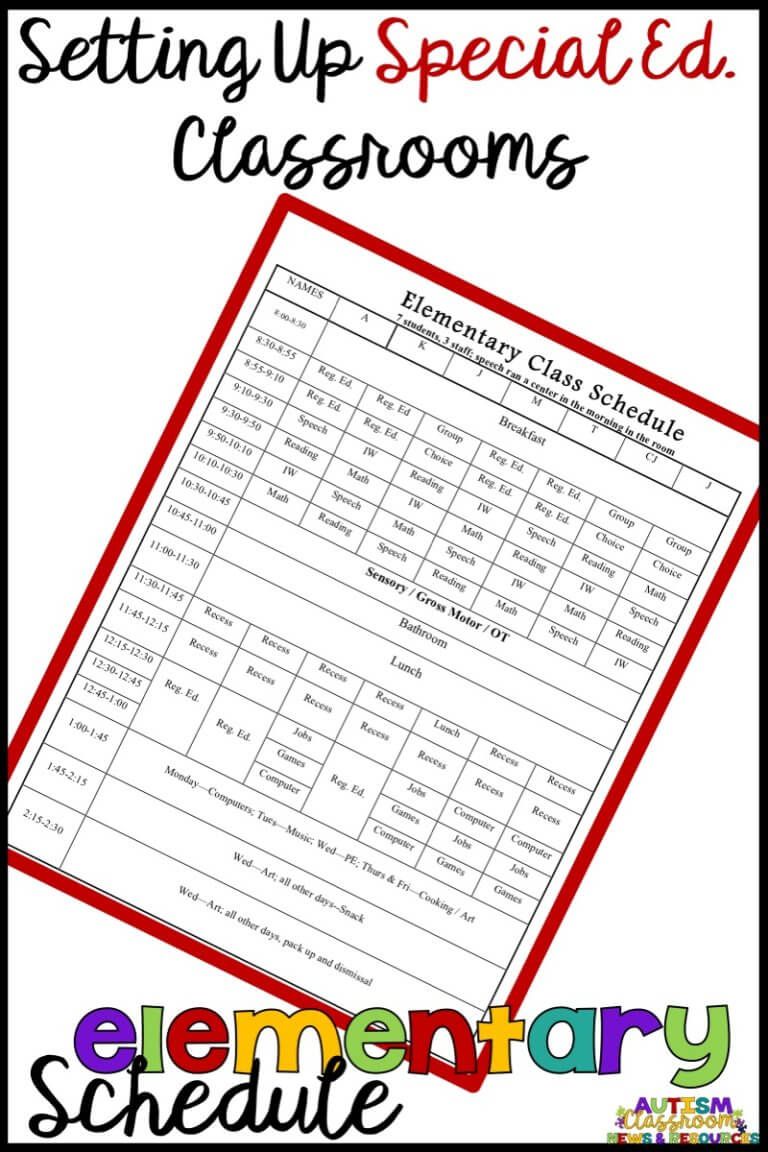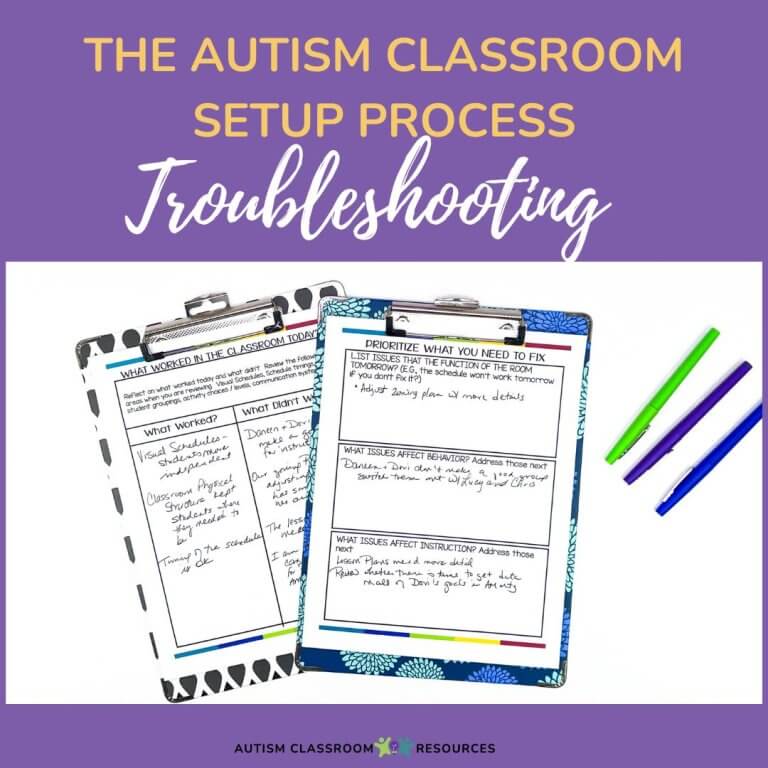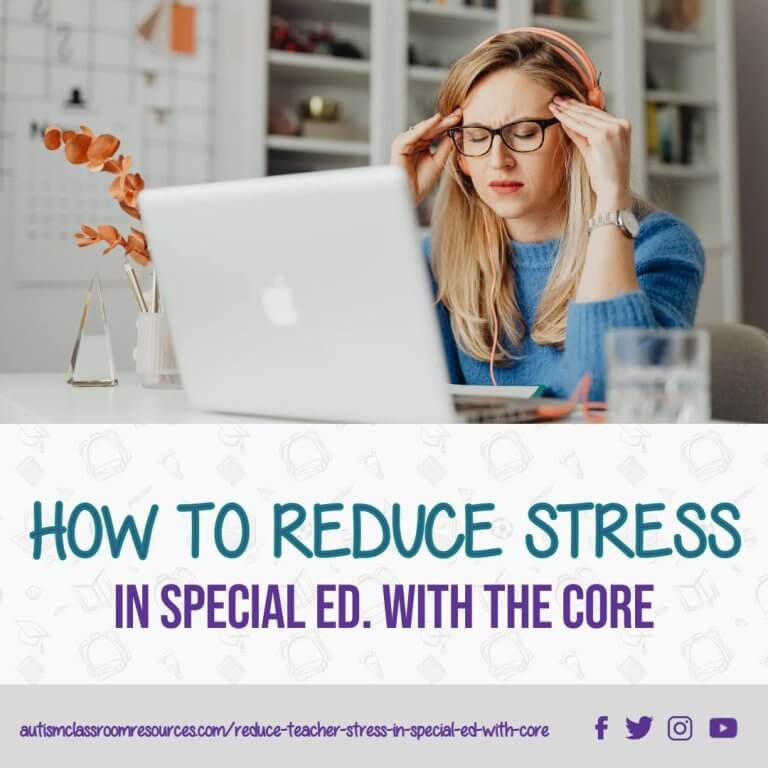Today I wanted to share an elementary schedule with you from a classroom we set up when I was consulting. This schedule is for a self-contained classroom for students with a variety of disabilities and skill levels. There were 7 students and 3 staff (a teacher and 2 paraprofessionals). I believe the class was kindergarten through 3rd grade. Some of the children went to the general education classroom for specific times of day and the group that went joined the same classroom with aide support. I’ve put a larger copy of the elementary schedule down below that is clearer to see.
To check out other posts in this series, click here.
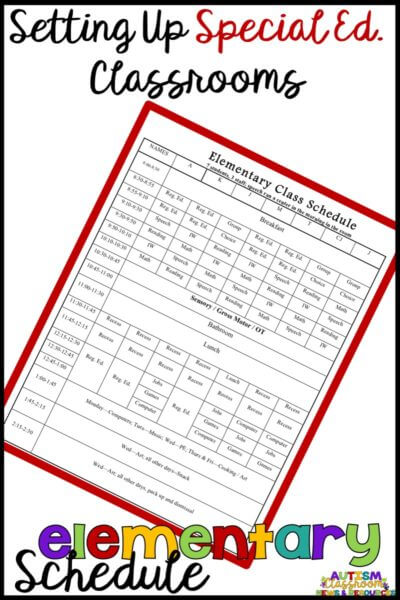 What I Like
What I Like
I like this elementary schedule as an example for a couple of reasons. The teacher had fewer staff to support the group that remained in the classroom when the others went to general ed. for group time. Also we didn’t want to start a center rotation until the class returned. This made the morning meeting time smaller but also gave use some time before centers could begin. We decided to use that time as choice time.
Choice Time
Choice time is not free time in our classrooms. We set up choice time so that students make a choice of available activities. We choose the activities as leisure or work skills that we want the students to try to expand the number of activities they can do independently to keep engaged as well as to have enjoyable leisure skills. I was talking to a family last week at camp about this specific issue and they were noting how difficult it was for them to find things their child with autism liked and would engage with for any amount of time other than TV or computer. Choice time is a time for children to sample and master some of the skills needed to keep themselves entertained when someone is not right there with them to keep them engaged.
Another goal of choice time is to learn to make a choice. Many students with ASD really struggle with making a choice. It’s also an opportunity to work on communication as they either verbally or with a picture or speech generating device choose an activity. They are expected to stay in the activity for the length of time designated and can be reinforced for doing so if that is difficult.
Finally, choice time addresses the goal of how to behave when the choice you wanted is not available. If computer time is on the choice board, most of the students really want that time. However, generally we have a limited number of computers available. The number of visuals on the choice board let students know how many spots are available and when it is no longer an option (because the center is full). This gives visual support to the situation so it appears less arbitrary and helps the student understand why they cannot make that choice. I have sometimes had a reinforcer students earn to have first choice so that they can get to choose the favorite center.
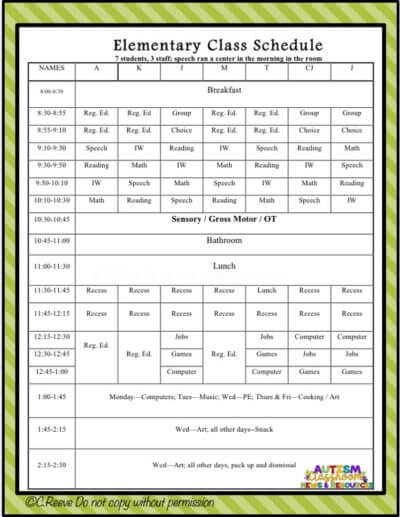
Center Rotations
I also like this elementary schedule because of the center rotations. Few of the students in the classroom were independent, so structured / independent work systems had to be staffed (IW). This limited the number of centers we could have to 2 plus independent work for 3 total with the available staff. This was a class where students worked better in smaller numbers, so the speech therapist that served the class stepped in and did her speech sessions as a center. This allowed the elementary schedule to have 4 centers with 1 student getting 1-1, because he needed it to stay focused, and the others being in groups of 2. This worked really well in this classroom and was a good reminder to think outside the box in designing the schedule.
Afternoon Centers
In this particular elementary schedule, we had centers in the afternoon. They were set up with school jobs like delivering the mail, watering the plants, taking care of the class garden, and cleaning the classroom. We assigned students jobs , but could also have a choice of jobs to do. There also was a game center that was designed to work on basic social skills like turn-taking and some language concepts, as well as the ability to learn to play common games. And the third center was the computer, which we included with educational software, because it was a center that students could be independent in since they liked the computer and this freed up staff members to take rotating lunch breaks. Finally in the afternoon their specials (except for Art on Wednesdays) were all at the same time, making it easier to make the schedule consistently.
For ideas for a high school schedule, check out my post on on setting up a high school special education classroom here. In my next post I will share a preschool schedule and then I will start to talk about physical environments.
Until next time,


